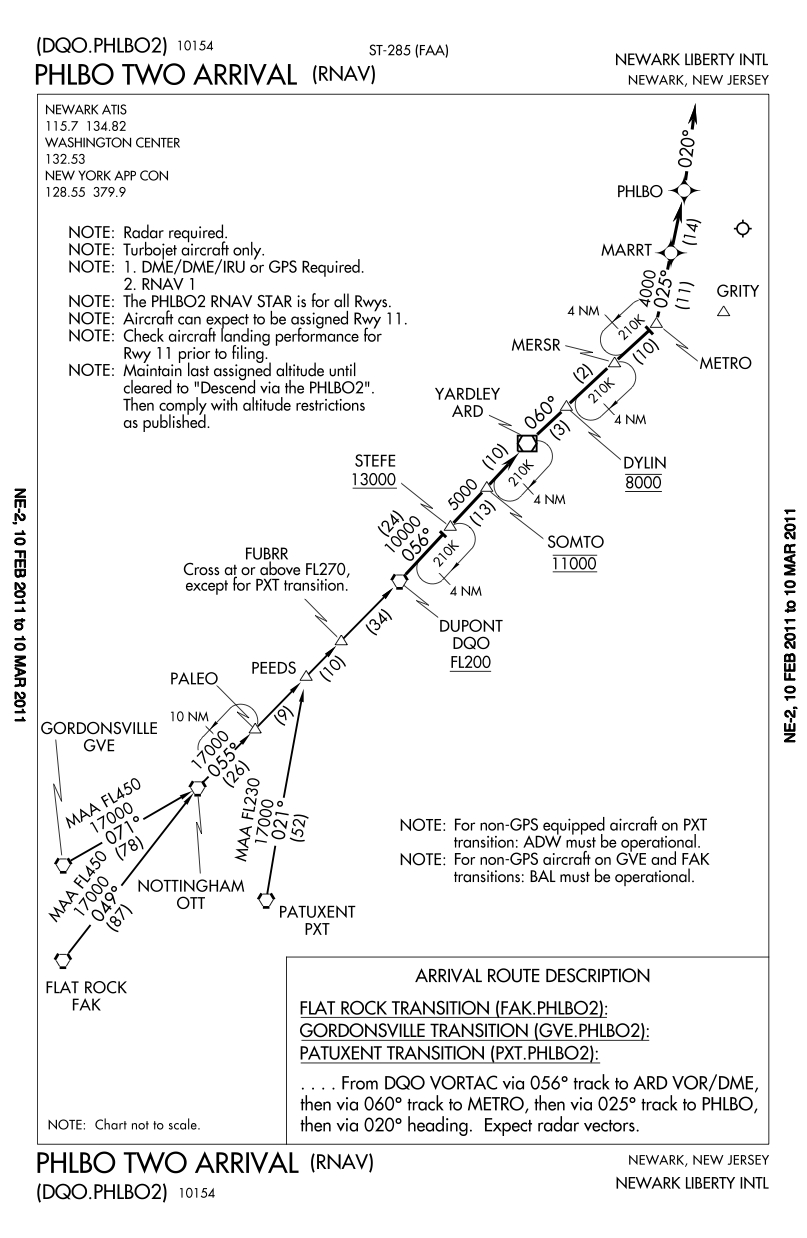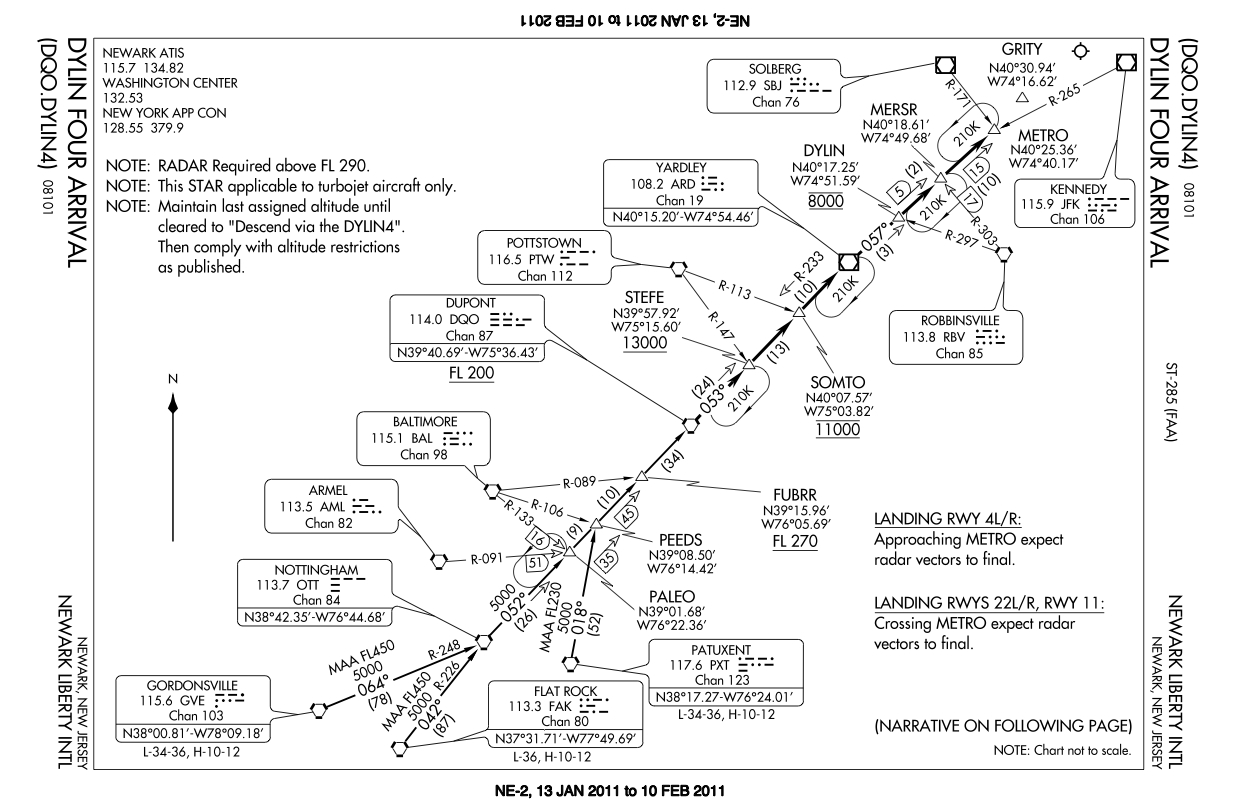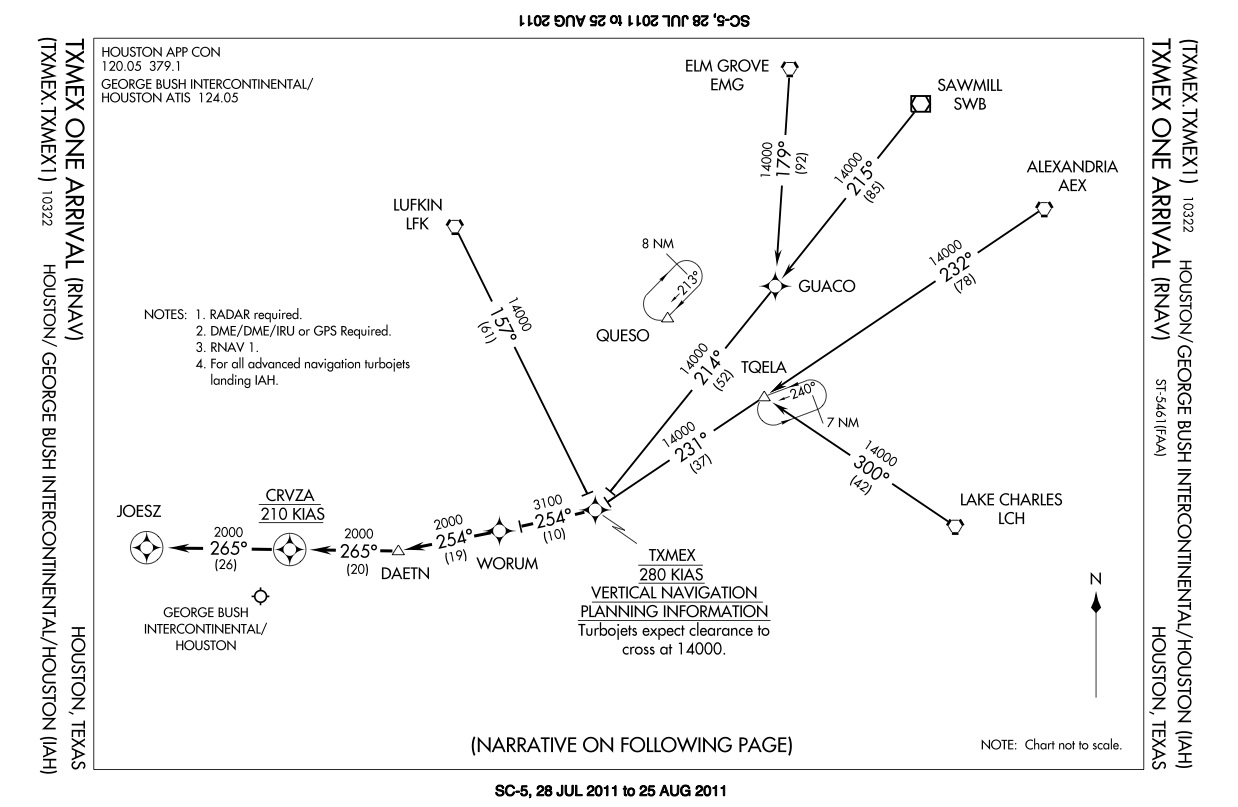Reader Question : “When established on a STAR (Standard Terminal Arrival) and given a clearance to descend (not via) are you cleared to descend to the cleared altitude without respecting the published STAR altitude restrictions? We were flying a STAR and were told to descend to 5000'. The next point on the STAR had a restriction to cross at or above 6000' Were we cleared to descend to 5000' unrestricted?”
In a previous post I spoke on what a Descend Via clearance is and what to do when the clearance is modified. If you are arriving on a STAR (Standard Terminal Arrival Procedure) but have not been given a “descend via” clearance, do you know what altitude restrictions you must comply with?
You will always comply with the last clearance given by Air Traffic Control. If there is a restriction on the STAR you will comply with the restriction if ATC has cleared you to descend VIA or has given you a clearance to do so. It is a good idea to always remember the last clearance given to you and while you are flying the STAR contemplate any ramifications along the arrival. Here are some examples.
Example : At Or Above Restriction
You are descending along the PHLBO2 arrival to Newark and are given a descent to twelve thousand. As you approach STEFE you see the note the restriction is at or above thirteen thousand. You should continue to twelve thousand because you were given the clearance to twelve thousand and were not given a descend VIA clearance.
Example : Cross At Restriction
You are flying the PHLBO2 arrival and were given the clearance to maintain twelve thousand. As you approach SOMTO intersection you see the crossing restriction is for eleven thousand. Since you were assigned the altitude of twelve thousand and were not given a descend via clearance you will maintain twelve thousand.
Example: Crossing restriction with a descend via clearance
Occasionally ATC will want you to fly a STAR with some modifications. For example while flying the DYLIN4 arrival depicted above you are given the clearance to cross STEFE “at” thirteen thousand then descend via the DYLIN4 arrival.
As you can see the restriction at STEFE is to be at or above thirteen thousand. But since the controller gave you the clearance to cross STEFE at thirteen thousand you must be at STEFE at thirteen thousand. After STEFE you will continue to descent via the DYLIN4 arrival complying with all crossing restrictions which include SOMTO at eleven thousand and DYLIN at eight thousand.
Example : Descending along a STAR with a speed restriction.
While flying the TXMEX1 arrival you are given the clearance descend to twelve thousand. As you approach CRVZA intersection you notice the restriction to cross CRVZA at two hundred and ten knots. This at times confuses pilots because they were not given a descend via clearance.
It is important to remember that a descend via clearance is addressing the altitude not the airspeed restrictions. You MUST ALWAYS comply with the speed restrictions unless given a clearance to do otherwise. I find it is best for me to separate all arrivals into two parts, the altitude and airspeed portions of the clearance.
For the altitude I have a continual dialog in my mind that says what altitude was I given last. Was I given a descent clearance and what type of descent clearance.
For the airspeed portion of the clearance I remember what the last clearance was for my airspeed. If given an arrival I ask myself if there are any airspeeds I must comply with.
Again, if you are flying an arrival you must always comply with the speed restrictions unless given a clearance otherwise. The altitude restrictions depicted on the arrival will be complied with only if you are given a clearance to descend via the arrival.
Conclusion:
It is very important to always remember your last clearance and its implications concerning the arrival you are flying. If you are given an arrival with crossing restrictions you will only comply with those restrictions if told to descend via the arrival.
If you were not given a descend via clearance and were given a clearance to descent “to” a specific altitude you must comply with the altitude restriction regardless of what is depicted on the arrival.
Airspeed restrictions are separate from altitude restrictions and must always be complied with unless amended by a clearance form ATC.
Safe Flying!
Visit Our Sponsors:




Comments on this entry are closed.